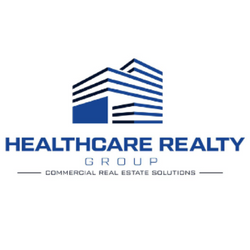Lease terms aren’t what they used to be. In today’s medical real estate market, costs are shifting, timelines are tighter, and the stakes are higher for both landlords and tenants. Whether you’re renewing, expanding, or starting from scratch, the details buried in your lease can shape your practice’s success long after the ink dries.
Many healthcare tenants sign long leases without revisiting the basics. But what made sense five or ten years ago might not hold up now. Construction costs have gone up. Operating expenses have changed. And in some markets, competition for space is intense. Taking the time to review your lease terms—really review them—can save money, prevent friction, and protect your ability to grow.
Here are five areas worth a closer look before you sign.
Rent escalations that quietly add up
Everyone expects rent to rise over time, but not everyone runs the numbers on how fast it adds up. Escalations are often written as a percentage increase per year or tied to inflation indexes like CPI. A two or three percent bump might sound small, but over a ten-year lease, it adds up to a very different monthly payment than the one you started with.
Some leases include compound escalations, which accelerate faster than you might anticipate. Others tie rent adjustments to the landlord’s operating costs without a clear ceiling. It’s worth asking for specifics. Is the increase capped? Is it fixed or variable? Does it apply to base rent only, or does it affect your share of common area expenses too?
A modest difference in escalation terms can shift your financial picture in year five or six—especially if you plan to reinvest in technology, staff, or services as your practice grows.
Tenant improvement allowances that fall short
Buildout costs have climbed dramatically in the last few years. What used to cost $80 per square foot might now run $120 or more, depending on the market and the scope. If your lease includes a tenant improvement allowance (TI), make sure it reflects current construction realities.
Landlords often offer TI dollars as a concession, but the amount isn’t always enough to meet medical-grade needs. Specialized plumbing, imaging rooms, enhanced electrical, and ventilation upgrades add up fast. If your practice requires equipment installation or compliance modifications, those should be accounted for early in the negotiation.
The key is clarity. Know whether the TI is a fixed amount, a reimbursement, or part of a turnkey build. Understand when and how the funds are disbursed. And don’t assume a generous-looking allowance will cover everything you need.
Use clauses that limit future flexibility
Most leases include a use clause that defines how the space can be used. In some cases, the language is broad enough to support long-term flexibility. In others, it’s narrow—restricting certain procedures, specialties, or subtenants.
For medical tenants, overly tight use clauses can create problems down the line. If you want to add a new service line, bring in a partner, or shift your scope of practice, you could find yourself boxed in. It can also complicate things if you ever decide to assign or sublease the space.
A use clause should protect your right to operate while allowing for reasonable evolution. If your business model involves multiple providers or planned growth, make sure the lease terms reflect that. Ask for carve-outs or add language that leaves room to adapt.
Repair and maintenance obligations that go deeper than expected
It’s easy to overlook who’s responsible for what until something breaks. In many leases, tenants are on the hook for routine maintenance, but the definition of “routine” varies. Some agreements push HVAC, plumbing, or even structural repairs onto the tenant. Others assign costs related to ADA compliance or city-mandated upgrades.
Before you sign, walk through the property with a contractor or facilities consultant. Understand the condition of systems and materials. If the HVAC unit is near the end of its useful life, that matters. If the roof needs attention, that should be flagged.
Clarify in writing what you’re responsible for maintaining, repairing, and replacing. Pay attention to what the landlord covers—and what they’re allowed to bill back. Cost-sharing for common areas, landscaping, snow removal, and security can make a difference in your monthly expenses.
Renewal options that seem secure but aren’t
Many tenants assume that a renewal option means guaranteed future space. But the fine print often tells a different story. Some leases allow landlords to deny renewal if they plan to redevelop, change the use, or sell. Others give the landlord the right to reset rent to “market rate” without defining how that rate will be determined.
If you’ve built your patient base around a particular location, losing that space can be a serious disruption. Before you count on staying, confirm that your renewal language gives you true control. Can the landlord terminate early under certain conditions? Will your rent adjust based on comparables, CPI, or some other benchmark?
Ask for transparency. If the option doesn’t give you enough predictability, negotiate language that does. It may not always be possible to lock in the future, but you can reduce the number of surprises.
Planning ahead saves more than money
Lease terms don’t just affect your rent. They influence how you operate, what you can invest in, and whether you’re able to grow on your timeline. In a rising-cost environment, the small details carry more weight.
If your lease is expiring within the next 18 months, start reviewing now. Talk with your real estate advisor, your legal team, and your financial planner. Take stock of your current space, future plans, and what’s negotiable in your next agreement.
The more you know before you sign, the more options you’ll have when it counts.





